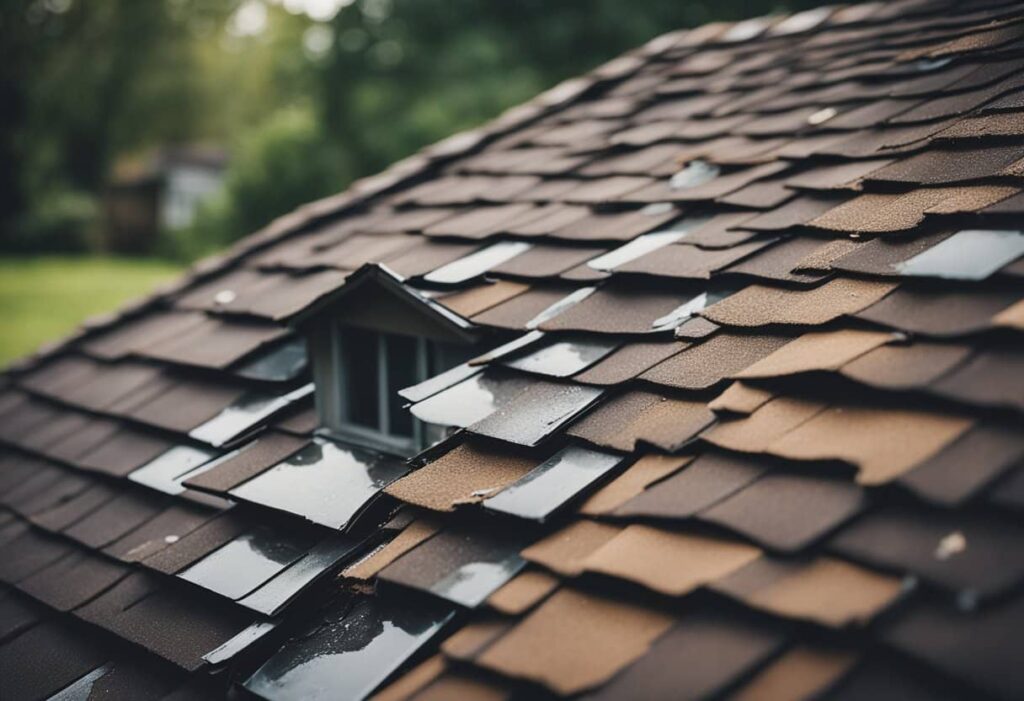A sturdy roof is essential for protecting your home from the elements, but how do you know when it’s time for a roof replacement? The age of your roof is a significant factor; most asphalt shingles need to be replaced every 15 to 20 years. If you’re uncertain about the exact age of your roof, visible signs can offer crucial clues to get a new roof for your home.

Finding shingle pieces in your yard, sagging sections, or water damage inside your home can all indicate that a new roof is necessary. Additionally, cracked or missing shingles, especially if the damage is extensive, are clear signs that your roof is nearing the end of its lifespan. Regular inspections can help you catch these issues early, potentially saving you from more extensive and costly repairs later.
A roof that’s failing won’t just impact the structure of your home; it can significantly affect its curb appeal and market value. A timely roof replacement can ensure that your home remains both safe and attractive, making it a worthy investment for any homeowner.
Identifying the Need for New Roof Replacement

Recognizing signs of a failing roof and understanding the typical lifespan of roofing materials can help determine when replacement is necessary.
Assessing Signs of Damage
Visible damage to shingles is one of the first signs that a roof may need replacement. Cracked, curled, or missing shingles often indicate that the roof’s integrity is compromised. If shingles are cupped at the edges or show bald spots where granules are missing, these are clear indicators of deterioration.
Water damage is another critical sign. Stains on the ceiling or walls signal leaks, necessitating an immediate roof inspection. A sagging roof suggests structural issues, which typically require a full replacement to ensure safety.
Severe weather can also contribute significantly to roof damage. Shingle pieces in the yard after storms are a warning sign. If damage is extensive, it might be more cost-effective to replace the whole roof rather than make ongoing repairs.
Understanding Roof Aging and Lifespan
Different roofing materials have varied lifespans. Asphalt shingles, one of the most common types, typically last 20-30 years. If a roof is approaching this age, it’s prudent to start planning for replacement, even without visible damage.
Metal roofs, known for their durability, can last 40-70 years. However, key factors such as climate and quality of installation can affect these estimates. Regular inspections help in assessing wear and predicting replacement needs accurately.
The age and condition of a roof should never be overlooked. Knowing the roofing material’s expected lifespan and monitoring signs of aging helps homeowners make informed decisions regarding roof maintenance and replacement.
Considering the Finances for New Roof
Replacing a roof can be a significant investment, and understanding the financial options available can help ease the burden. This section addresses affordability concerns and how to prioritize long-term value when investing in a new roof.
Options When Affordability Is a Concern
For those who need a roof but can’t afford it, there are several financing options available:
- Personal Loans: Many homeowners opt for personal loans to cover roofing costs. These loans are unsecured and can offer fixed monthly payments.
- Home Equity Loans: These loans leverage the home’s equity. They often come with lower interest rates compared to personal loans.
- Roof Company Financing: Some roofing companies provide financing plans. These can be convenient but compare the interest rates and terms.
- Insurance Coverage: If the roof damage is due to an insured event like a storm, homeowners insurance may cover part or all expenses.
- Credit Cards: While not ideal due to high-interest rates, credit cards can be a temporary solution for immediate repairs.
- Government Programs: Local and federal programs may offer grants or low-interest loans for home improvements including roof replacements.
Investing in Long-Term Value
Spending on high-quality roofing materials can be beneficial:
- Durability: Materials like slate or metal may have higher upfront costs but offer longevity. Asphalt shingles, although less expensive, may need replacement sooner.
- Energy Efficiency: Investing in energy-efficient roofing can reduce heating and cooling costs. Reflective materials and proper ventilation can contribute to significant savings.
- Resale Value: A well-maintained roof can enhance a home’s market value. Potential buyers often prioritize homes with newer, durable roofs.
- Warranty Benefits: High-quality roofing often comes with extensive warranties, providing peace of mind and protection against future expenses.
Selecting the right financial option and investing in durable materials ensures the roof is not only affordable but also adds value to the home.
Working With Professionals
Engaging with a professional roofer is crucial for ensuring quality work and protecting your investment. Knowing how to choose a reputable roofer and understanding when to take their advice can save you time, money, and stress.
Choosing a Reputable Roofer
Selecting a reputable roofer involves thorough research and evaluation. Start by seeking referrals from friends, family, or neighbors who have had positive experiences.
Online reviews and ratings on platforms like Yelp or Google Reviews are also valuable.
Ensure the roofer is licensed, bonded, and insured. Documentation of these credentials should be easily provided upon request.
Request a written estimate that includes a breakdown of materials, labor, and any potential additional costs.
Clear communication about deadlines and expectations is a must. Always verify the roofer’s warranty policies regarding both materials and workmanship.
When to Heed Professional Advice
Taking a roofer’s advice seriously can prevent further damage to your home. If a roofer recommends a replacement, they likely have identified issues like shingle damage, water leaks, or structural concerns.
Listen to their assessments, especially if multiple quotes from different contractors tell a similar story. Signs such as sagging roofs, water damage, or curling shingles can indicate a need for immediate action.
If your roof is over 20 years old, a professional might suggest a replacement even without active leaks, as aging materials become less reliable.
Ignoring early warnings can lead to higher costs and more extensive repairs. Thus, trusting experienced professionals can be a wise decision.
Maintaining Your New Roof
Proper maintenance ensures the longevity and performance of your roof. Regular inspections and timely repairs are essential.
Inspect Annually: At least once a year, have a professional inspect your roof for any damage or wear. Look for cracked, torn, or missing shingles, loose or rusted nails, and any signs of sagging.
Clean Gutters: Ensure gutters and downspouts are clear of debris to prevent water backup and potential damage. Clogged gutters can lead to water seeping into the roof structure, causing rot and leaks.
Trim Overhanging Branches: Trees can cause significant damage to a roof. Trim any branches that hang over your roof to prevent them from scraping the surface or breaking off during storms.
Check for Moss and Algae: Moss and algae can degrade roofing materials. Use a moss remover designed for roofs and sweep away any buildup. For persistent growth, consider installing zinc or copper strips which naturally inhibit moss and algae.
Seal Roof Penetrations: Regularly check areas where elements penetrate the roof, such as chimneys, vents, and skylights. Ensure seals and flashing are intact to prevent water infiltration.
Repair Promptly: Address minor issues like small leaks or loose shingles immediately before they can escalate into larger problems.
Winter Care: In colder climates, ensure your roof can handle snow loads and use a roof rake to remove excess snow. Ice dams can form and cause water to seep under shingles.
Routine maintenance not only protects your roof but can also extend its lifespan, saving costs in the long run.
Rabbit Roofing – Best Tampa Roofers
At Rabbit Roofing, we take pride in being the best roofers in Tampa, known for our exceptional roof repair services, including emergency repairs. Our commitment to using high-quality, locally manufactured materials ensures durability and reliability for every project. Whether you’re dealing with minor leaks or extensive damage, our experienced team provides prompt and dependable repairs and roof replacement to protect your home and loved ones. With decades of expertise and a focus on customer satisfaction, Rabbit Roofing stands out as the premier choice for all your roofing needs in Tampa and West Central Florida including Hillsboro.

